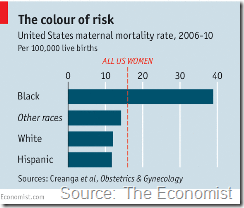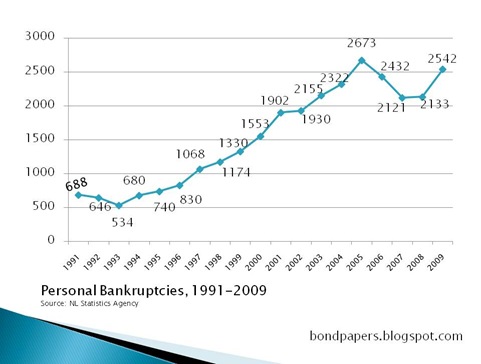Inspired by a comparison of rates for infectious syphilis for Canada and for Alberta, your humble e-scribbler took a gawk at the tables from the Public Health Agency of Canada that the Globe staff used to make their tables.
Alberta’s rate per 100,000 of population in 2009 was 7.3 compared to 5.0 for Canada.
The Newfoundland and Labrador rate was 0.6 per 100,000 and that hardly looks like anything at all.
But take a look at the rates for males and you see something dramatically different.
From 1999 to 2007, the male rate was typically 0.0, as in nil, nada and zippo. In 2003, it hit zero point three, in 2005 it was zero point eight and in 2007 the rate hit zero point four.
But…
In 2008, the rate for syphilis infection among males in Newfoundland and Labrador hit 2.4 per 100,000. It was 1.2 per 100K in 2009.
The rates for males in Alberta was 7.8 and 9.8, up from 8.7 and 9.8 the two preceding years.
That’s one phantasmagorical change – even if the absolute numbers are relatively small. But if you stop and think about it for a second, you can see what might have been going on. Alberta’s big jump was in 2003 when the rate hit 2.0 up from zero point six.
Migrant labour to and from Alberta likely caused the rate to jump in Newfoundland and Labrador.
And there’s no way of knowing for sure how many of those Alberta syph cases actually belong to people who list their residence for income tax purposes as being in Newfoundland and Labrador.
Syphilis can be a nasty disease. In the days before penicillin, people died from it, most often because the disease progressed to a deadly stage before people realised what they’d contracted.
Odds are good, though, that people with a sore or two aren’t avoiding their doctors these days. Syph is readily treatable. If people get it, they need a trip to the doctor and a few pills. Modern medicine coupled with drug insurance plans and Medicare mean that no one has to suffer along in quiet.
And if the doctors get the cases, then they are required by provincial laws to report the diseases to their provincial public health officers.
- srbp -



